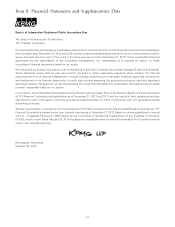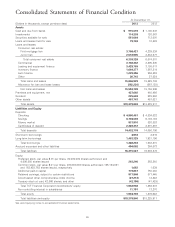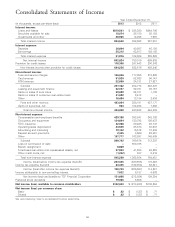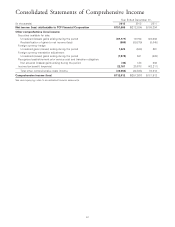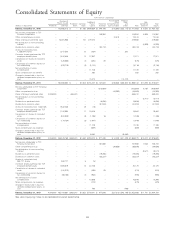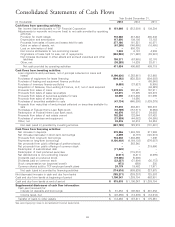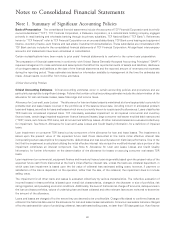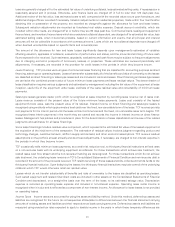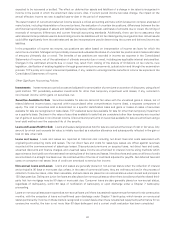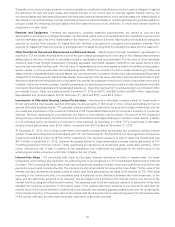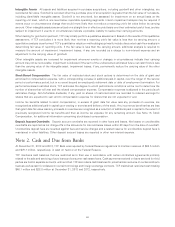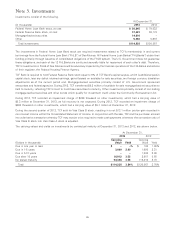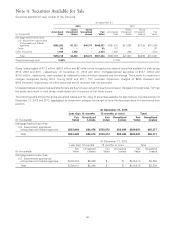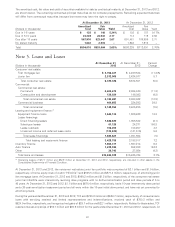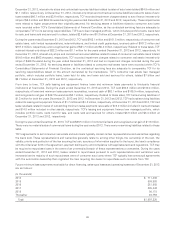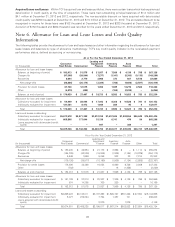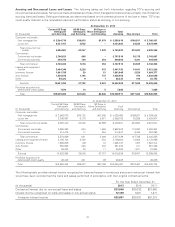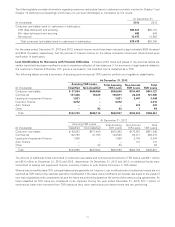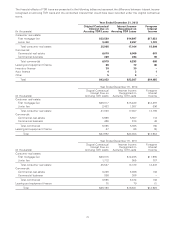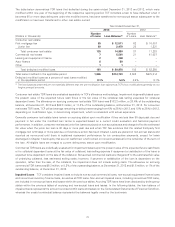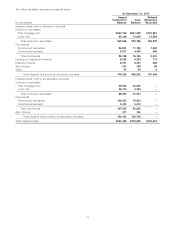TCF Bank 2013 Annual Report Download - page 80
Download and view the complete annual report
Please find page 80 of the 2013 TCF Bank annual report below. You can navigate through the pages in the report by either clicking on the pages listed below, or by using the keyword search tool below to find specific information within the annual report.Intangible Assets All assets and liabilities acquired in purchase acquisitions, including goodwill and other intangibles, are
recorded at fair value. Goodwill is recorded when the purchase price of an acquisition is greater than the fair value of net assets,
including identifiable intangible assets. Goodwill is not amortized, but assessed for impairment on an annual basis at the
reporting unit level, which is one level below reportable operating segments. Interim impairment analysis may be required if
events occur or circumstances change that would more likely than not reduce a reporting unit’s fair value below its carrying
amount. Other intangible assets are amortized on a straight-line or effective yield basis over their estimated useful lives, and are
subject to impairment if events or circumstances indicate a possible inability to realize their carrying amounts.
When testing for goodwill impairment, TCF may initially perform a qualitative assessment. Based on the results of this qualitative
assessment, if TCF concludes it is more likely than not that a reporting unit’s fair value is less than its carrying amount, a
quantitative analysis is performed. TCF’s quantitative valuation methodologies primarily include discounted cash flow analysis in
determining fair value of reporting units. If the fair value is less than the carrying amount, additional analysis is required to
measure the amount of impairment. Impairment losses, if any, are recorded as a charge to non-interest expense and an
adjustment to the carrying value of goodwill.
Other intangible assets are reviewed for impairment whenever events or changes in circumstances indicate their carrying
amount may not be recoverable. Impairment is indicated if the sum of the undiscounted estimated future net cash flows is less
than the carrying value of the intangible asset. Impairment losses, if any, permanently reduce the carrying value of the other
intangible assets.
Stock-Based Compensation The fair value of restricted stock and stock options is determined on the date of grant and
amortized to compensation expense, with a corresponding increase in additional paid-in capital, over the longer of the service
period or performance period, but in no event beyond an employee’s retirement date or date of employment termination. For
performance-based restricted stock, TCF estimates the degree to which performance conditions will be met to determine the
number of shares that will vest and the related compensation expense. Compensation expense is adjusted in the period such
estimates change. Non-forfeitable dividends, if any, paid on shares of restricted stock are recorded to retained earnings for
shares that are expected to vest and to compensation expense for shares that are not expected to vest.
Income tax benefits related to stock compensation, in excess of grant date fair value less any proceeds on exercise, are
recognized as additional paid-in capital upon vesting or exercise and delivery of the stock. Any income tax benefits that are less
than grant date fair value less any proceeds on exercise are recognized as a reduction of additional paid in capital to the extent of
previously recognized income tax benefits and then as income tax expense for any remaining amount. See Note 15, Stock
Compensation, for additional information concerning stock-based compensation.
Deposit Account Overdrafts Deposit account overdrafts are reported in other loans and leases. Net losses on uncollectible
overdrafts are reported as net charge-offs in the allowance for loan and lease losses within 60 days from the date of overdraft.
Uncollectible deposit fees are reversed against fees and service charges and a related reserve for uncollectible deposit fees is
maintained in other liabilities. Other deposit account losses are reported in other non-interest expense.
Note 2. Cash and Due from Banks
At December 31, 2013 and 2012, TCF Bank was required by Federal Reserve regulations to maintain reserves of $95.5 million
and $79.7 million, respectively, in cash on hand or at the Federal Reserve.
TCF maintains cash balances that are restricted as to their use in accordance with certain contractual agreements primarily
related to the sale and servicing of auto loans and consumer real estate loans. Cash payments received on loans serviced for third
parties are held in separate accounts until remitted. TCF also retains cash balances for potential loss recourse on certain sold auto
loans as well as cash for collateral on certain borrowings and foreign exchange contracts. TCF maintained restricted cash totaling
$46.1 million and $28.8 million at December 31, 2013 and 2012, respectively.
64


